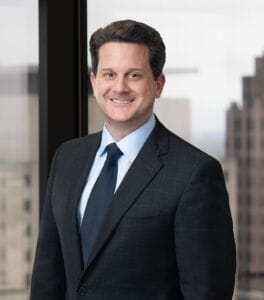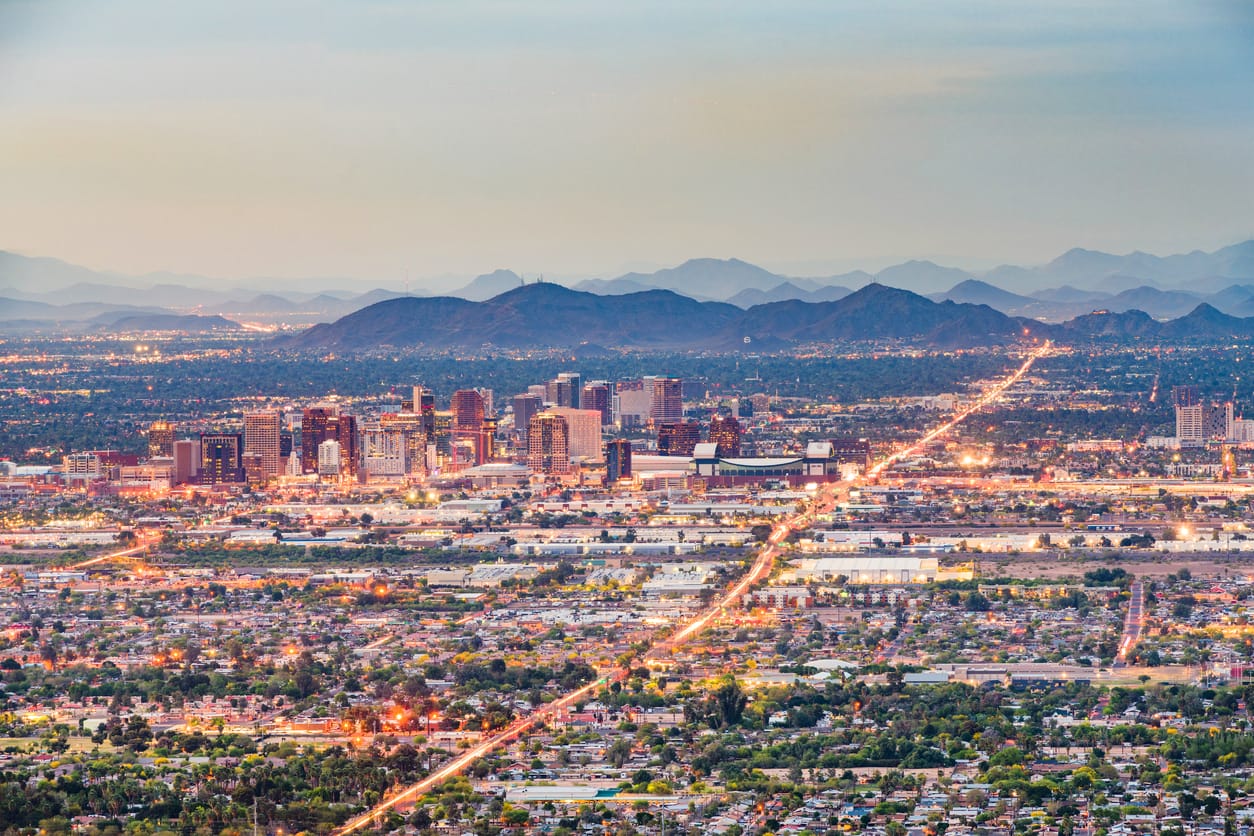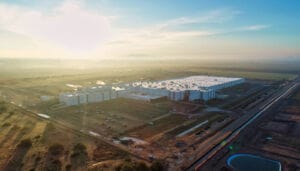Ben Graff, partner at Quarles, has made a career of ushering in new possibilities. As a zoning attorney, he helps clients change a site’s designation to a higher and better use. Sometimes that means an adjustment to how dense an apartment building can be. On other occasions, the transformation is more drastic — like getting approvals for the development of retail, restaurant, Class A office and luxury multifamily where a landfill once stood.

“That’s a great example of what I do for a living,” Graff explains. “In that case, it was taking a literal pile of garbage and turning into one of Tempe’s prominent developments — Rio2100. That came with every challenge under the sun, but over the years, we were able to slowly but surely rezone the property to MU-4, which is the most intense mixed-use category in Tempe.”
AZRE magazine sat down with Graff to learn more about the housing affordability issue in the Valley, how the rezoning process can be used to halt development and the importance of consensus building.
The following responses have been edited for clarity and length.
AZRE: There has been talk about converting spaces such as hotels or office buildings into apartments to address the demand for affordable housing in the Valley. Is this a viable path for creating more units?
Ben Graff: For context, I work with a lot of multifamily clients, and what make my practice interesting is I represent luxury multifamily developers — like at Rio2100 — but I also do a large amount of affordable housing rezoning and development work, almost all of which is dependent on the state [Low-Income Housing Tax Credit] program.
Most of the developments I’m working on are ground up, not conversions. There’s not an appetite in the market for conversions because they come with a lot of unexpected costs and challenges. Office space and even hotels aren’t up to the correct code for residential living.
When they do happen, conversions work better for market-rate or luxury living, where the deals pencil out with more profit margin. But I don’t see it as an avenue for affordable units, especially under the current tax credit process.
READ MORE: As Metrocenter Mall is demolished, here’s what is coming
AZRE: Looking at the issue of affordable housing more broadly, what makes developing affordable housing difficult?
Ben Graff: The biggest disconnect comes from NIMBYism — organized efforts at the neighborhood level to push back against multifamily and density in general. Arizona embraced sprawling growth early on, and people argue that’s part of the state’s charm.
Whether you’re looking at water savings or affordability, density is where it’s at. But I’ve been in some very contentious public hearings where affordable housing is talked about like it’s a blight on the community. These are projects that house our teachers, first responders, retail workers — the people we interact with daily who are the building blocks of our community.
Ultimately, if a developer gets the pushback we’re seeing in our cities when they try to bring affordable housing, they may decide to develop somewhere else.
AZRE: How are NIMBYs driving away development?
Ben Graff: If a rezoning case is involved, then it’s a public process by definition and design — as it should be. Specifically, it’s a discretionary approval by the local legislative body where the surrounding community is given notice and the opportunity to give their opinion on the project.
This is the first place where people can stand in the way of development — by speaking out against it in a public forum and asking their elected officials to vote against the case. Whether it’s a mayor and city council or board of supervisors, they should be listening to their constituents, but we need elected officials who balance those opinions against the demand for affordable housing and the benefits these projects bring to our cities.
AZRE: Is there another way NIMBYs can stymie projects?
Ben Graff: After a rezoning case is approved, there are multiple ways it can be repealed. One mechanism allowed under Arizona law is a referendum. If organizers collect enough signatures, then the zoning case — which was a legislative decision — is turned into an election ballot item.
And we’re talking about a true election where both sides put up campaign signs and send out flyers. But instead of voting for a mayor, people are giving a thumbs up or down on a rezoning case that was previously approved by board supervisors or the city. We’re seeing a growing number of these.
AZRE: All the opposition has to do is collect enough signatures to trigger a referendum on something that has already been approved?
Ben Graff: Yes, and the signatures needed is based on the number of voters from the last mayoral election in that specific jurisdiction. City of Phoenix requires thousands upon thousands of signatures to get that through, but we had a multifamily rezoning case in Youngtown that only required around 400 signatures.
Imagine you go through the process of hiring architects, engineers and a zoning lawyer. You work with the municipality, pay all the fees involved and get your case approved — but all of that can be undone by 400 residents signing a petition.
AZRE: Did enough people sign to send the decision to the ballot box?
Ben Graff: Despite their efforts, the form and format of the petitions — and how they were filed — did not comply with Arizona law. More than 300 affordable housing units were saved as a result.
But from an economic development standpoint, when groups are looking into the state and see the headlines about, for example, how Axon may leave Scottsdale because of the referendum on its headquarters [due to the 1,895 apartment units planned on site] that can push people away from Arizona.
AZRE: If a piece of land is already zoned multifamily, is there still an opportunity for NIMBY groups to oppose the project?
Ben Graff: Assuming the site meets the developer’s needs and doesn’t require any variances or exceptions, that’s called an as of right use. In that scenario, they still have to go through site plan approval, site plan review, building permits — but in most jurisdictions those are administrative approvals that are not subject to a public process.
AZRE: Is it rare for multifamily projects to have an as of right use?
Ben Graff: I’d say anywhere from a third to a half of our due diligence work for multifamily are for sites that allow as of right use, and the rest require some kind of entitlement or public process.
As we have less and less land to play with in the Valley, more sites will need to be rezoned to multifamily. That will require healthy debate between the city, the council and its economic development department when we are rezoning from commercial, because a city can see that as a loss of revenue generation from sales tax.
In reality, there are situations where it’s better to rezone commercial to multifamily, because that will bring the rooftops needed to support the retail. At neighborhood meetings, I hear people say all the time that they want a Trader Joe’s or Whole Foods built instead of apartments. But those grocery vendors need to see there are enough potential customers to justify building in that spot.
AZRE: What are your thoughts about some of the legislative efforts in recent years addressing housing affordability, such as the state stepping into local zoning matters?
Ben Graff: Every year, there are bills aimed at creating affordable housing through making more land automatically multifamily. I’m always torn on this topic, because I’ve studied the history of zoning and have developed a deep appreciation for why these matters are decided locally.
Zoning at a macro level doesn’t make sense. City councils and county supervisors understand their communities. At the same time, a lot of the folks at the legislature have the right intentions in making housing more available.
People may think that as a zoning attorney, I’d like a process where there’s no public input. But they’d be wrong — that’s not how our democracy was set up. The other hat I wear is as an elected official on the Central Arizona Project Board, so I have a strong belief in community involvement.
It’s also why I chose to be a consensus builder as a lawyer rather than something more binary like litigation. I enjoy getting the city, community members and my client into a room to find a compromise.
So, I’d have concerns about any measure that completely removed the people’s voice from a zoning process. But I also recognize the significant economic detriment to Arizona if we get a reputation of losing opportunities to the referendum process.




